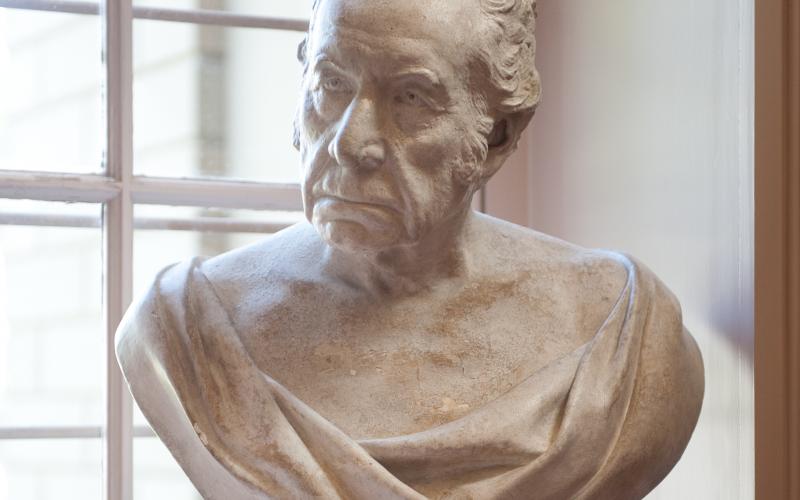
Gilbert Stuart, c. 1825. John Henri Isaac Browere (1792-1834). Marble. Gift of Reverend Dr. Roderick Terry.
Gilbert Stuart (1755-1828) lived and studied art in Newport. Considered outstanding in his field, he spent his adult career in Newport, Scotland, London, Phildelphia, Boston, and Washington D.C., where he painted many familiar portraits, inculding the most famous images of George Washington.
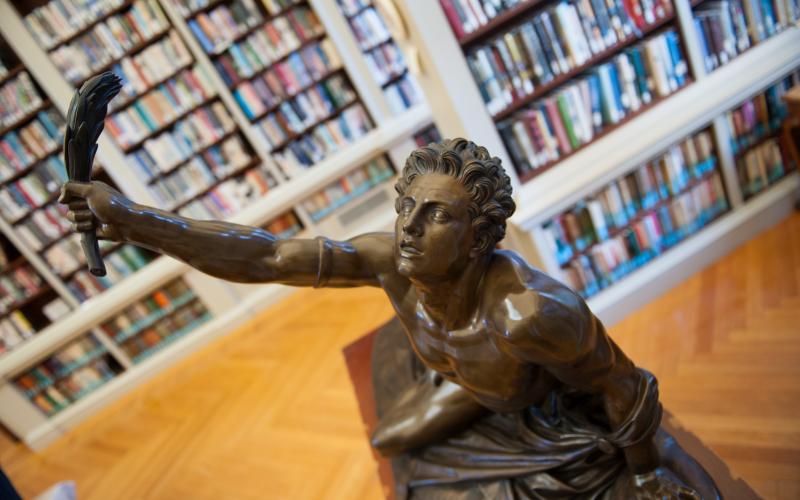
Pheidippides, Soldier of Marathon, c. 1917. Bronze. Gift of Mrs. George S. Scott.
This bronze statue is a mechanical copy of the original marble in the Louvre by Jean Pierre Cortot (1787-1843), French School, and is known as The soldier of Marathon Announcing the Victory. Pheidippides is a character in a play by Aristophanes, he is said to have run from Marathon to Athens to deliver news of a military victory against the Persians at the Battle of Marathon.
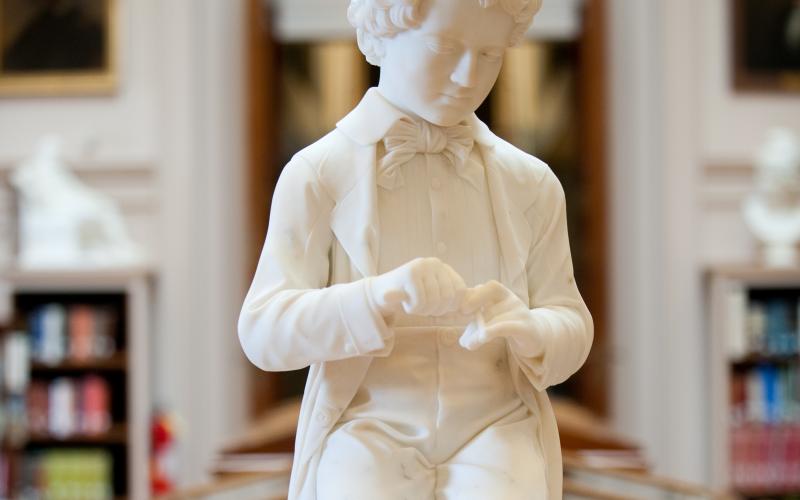
The American School Boy, c. 1857. Joseph Mozier (1812-1870). Marble. Gift of Edward King.
Joseph Mozier was born in Vermont and opened a studio in Rome in 1845 where he remained until his death. Most of Mozier's themes had a strong literary, historical, or anecdotal appeal. His most famous work, The Prodigal Son, won the Grand Prize in Rome in 1867.
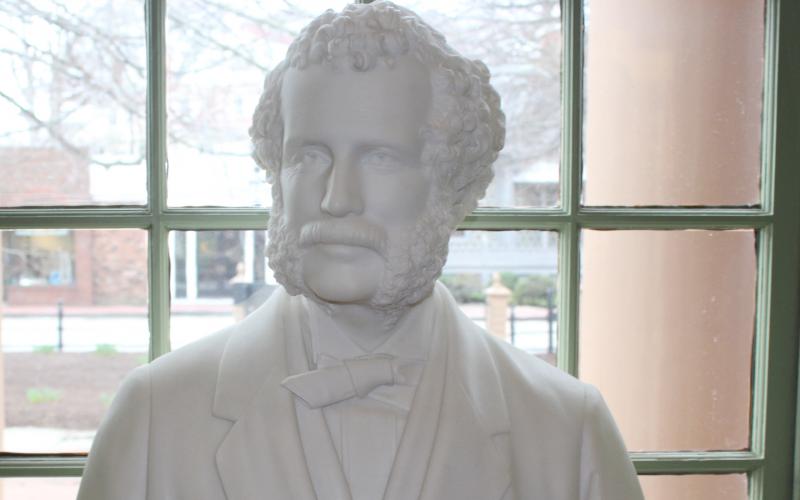
Captain Charles Hunter, c. 1875. Richard Saltonstall Greenough (1819-1904). Marble. Gift of Henry D. Phelps.
Charles Hunter (1774-1849), son of Senator William Hunter (President of Redwood 1846-49) and Mary Robinson, was born in Newport 19 June 1813. He entered the Navy in 1831, was promoted to Lieutenant in 1841 and retired from service in 1855 due to ill health. He married Mary Rotch in 1848 and returned to active duty in 1862 when Fort Sumter was fired on. In October of 1862 the ship he commanded fired on a supposedly neutral ship in Cuban waters. Hunter was dismissed from the Navy but was later vindicated and reinstated as Captain by a special act of Congress in 1867. Captain Hunter, his wife and daughters were passengers on the S.S. Ville de Havre when she was lost at sea 22 November 1873.
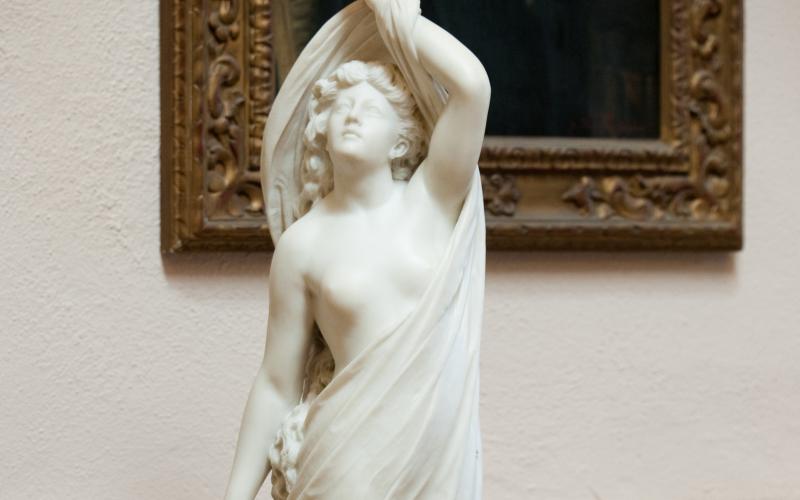
Transition, c. 1870. William Greene Turner (1833-1917). Marble. Gift of William Greene Turner.
Artist's interpretation of Henry Wadsworth Longfellow's line, ``there is no Death! What seems so is transition...`` from ``Resignation,`` written in the autumn of 1848 following the death of his daughter Fanny and first published in his collection The Seaside and the Fireside in 1849.
